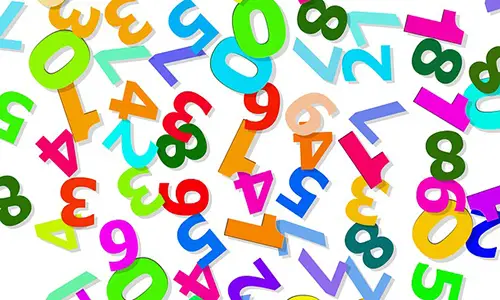The world as we know it, is driven solely by scientific and logical reasoning. Every little parameter, including achievements are measured by assigning values, and are rated on an increasing or decreasing scale.
While it is believed that communication and language is of major importance in today’s world, one almost forgets that numerical digits though overlooked are almost omnipresent.
As amusing as it may sound, numbers find importance in every little domain of life. Be it the ingredients required to bake cookies, the IQ and EQ of an individual, or the superstitious day of the devil, numbers explain them all. (Very random indeed!)
If asked of me, I would probably be able to produce a 600 page (or maybe even more) document on the significance of numbers, another 600 page document on facts about numbers and probably yet another 600 page, volume 3 document of the same on just numbers and representations. Such is the impact of numbers in our lives!
Battling the exponential gradation of my excitement levels on the mention of numbers and the urge to type out a 600 page document on them, I managed to list out my 10 personal favorite facts about numbers.
The compilation of these facts are given below.
1. The human brain perceives numbers on a logarithmic scale rather than an additive one.
A logarithmic scale is made of a pattern of numbers such that the successive number on the scale is always a multiple of the previous number. In general, a human brain tends to perceive numbers on a logarithmic scale due to the natural sense of proportions. This explains why we feel like every year ends faster than the previous years.
2. The googol and googolplex.
Googol is a number represented by a one followed by hundred zeros. A googolplex is an even larger number that is represented by one followed by a googol zeros. If a googol is written as 10^100, then a googolplex may be written as 10^googol.
The popular search engine ‘Google’ got its name as a result of misspelling googol.
3. The history of zero.
The idea and concept of zero was first introduced and explained by the Indians in around 650AD. Zeros were added as a part of the counting system and was called the ‘Sunya’ meaning empty.
4. The Fibonacci sequence.
A Fibonacci sequence of numbers is generated by adding the last two numbers. 0 1 1 2 3 5 8…… is a Fibonacci sequence. The sunflower seed consists of consistent spirals. These spirals are arranged in Fibonacci series.
5. The devils numbers.
There have been many numbers that have been listed as that of the devil. While the book of revelation describes 666 as the number of the beast, there has been talk that the actual number of the devil is in fact 616. Moreover, the number 13 is believed by many to be an unlucky number.
6. The history of ‘hundred’.
The number hundred representing a 1 followed by two zeros was initially used to represent ‘120’. It is represented as ‘C’ in Roman numerals.
7. Complex numbers.
A complex number is one that is represented as a+ib where ‘a’ represents the real part and ‘ib’ the imaginary part.
An example of a complex number is 5+6i.
8. Catalan numbers.
A sequence of natural numbers that involve recursively defined objects are called Catalan numbers.
9. Motzkin numbers.
A widely used term in geometry, the Motzkin number for any given number represents the number of different way non intersecting chords can be drawn in a circle between n points.
10. The true value of infinity.
It has been argued by many that infinity isn’t exactly a number but just a concept introduced to explain a never ending sequence of numbers. Is it countable? No! In spite of the inability to determine the true value of infinity, it still remains a very important number and parameter widely discussed in mathematics.











Leave a Reply